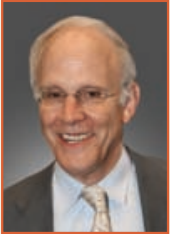
 David Gross, KITP Director.
David Gross, KITP Director.
Last April the KITP was reviewed by the NSF in a midterm review of our five-year contract. The first day of the site visit consisted of a presentation by us to the review committee. We have decided to make this presentation available to all via the KITP website (www.kitp.ucsb.edu).
We do this for two reasons.
First, the KITP is a national users’ facility whose main purpose is to serve the general community of theoretical physics. Thus it is appropriate that we report on our functioning to the community as a whole. The KITP will only continue to flourish if the community of our colleagues is knowledgeable about, engaged in, involved with, and supportive of the Institute.
Second, we believe it is important to address some misconceptions that often arise with respect to the structure and the funding of the KITP. Some of these misconceptions, which I often encounter in conversations with colleagues, I will immediately address below. I urge all of you who are interested in the KITP to look at the presentation.
Permanent Members
Misconception: “UCSB is so lucky to have so many excellent NSF-funded positions at the KITP.”
Reality: We are indeed lucky to have five such excellent permanent members at KITP. However, the NSF contract pays only ¼ of their academic salary (and no summer salary); the rest comes from UCSB. They are professors in the Physics Department, and they teach (although with a reduced load).
Kavli Funds
Misconception: “You are so lucky to have a big endowment from Kavli.”
Reality: Almost all the generous gift from Fred Kavli went to build the new extension to the KITP. We have currently a very small endowment, which in good times can only cover a few percent of our budget. For the rest we are dependent on federal funding.
STIMULUS
Misconception: “You are so lucky to be federally funded. You must have lots of stimulus money.”
Reality: We received no stimulus money. The NSF decided not to spend any stimulus money on supplementing existing contracts. In fact, in fiscal 2009 we received $300,000 less than in fiscal 2008.
UCSB
Misconception: “UCSB is so lucky to have the KITP in Santa Barbara, a bonanza for the university.”
Reality: Although UCSB is indeed lucky that the KITP is situated in Santa Barbara, the University has greatly contributed to its success. It offers the NSF a 50 percent reduction in the overhead rate and contributes approximately $1,000,000 a year to our budget (the Director’s salary, ¾ of the salaries of the permanent members, maintenance and infrastructure, etc.).
Budget
Misconception: “Given the vitality of the KITP and the increase in activity, you must be treated very well by the NSF. Your budget must have increased greatly over the last decade.”
Reality: In 2001 we received (adjusted to 2009 dollars) $4,900,000 from the NSF. In fiscal 2009 we are receiving $4,300,000 a year from the NSF even though our activities (~12 programs a year, 1,000 visitors, 23,500 visitor days and new initiatives) have greatly expanded in response to the needs of the community.
You might wonder, given the clarifications above, how we are coping. The answer is—with difficulty. Some of our most successful initiatives, such as the “Rapid Response Program,” are still funded by Kavli Institute funds that are running out. Also we have managed to support some of our biological initiatives with funds from NIH and Burroughs Wellcome. And, finally, our ability to cover the expenses of our participants has greatly declined. Our basic per diem support is, in adjusted dollars, about half of what it was 30 years ago. The fact that our colleagues continue to come is only because our programs are so exciting.
The only way this situation will turn around is if our user community makes its voice heard. The funding agencies need to hear from our users.
David Gross
KITP Newsletter, Winter 2009
